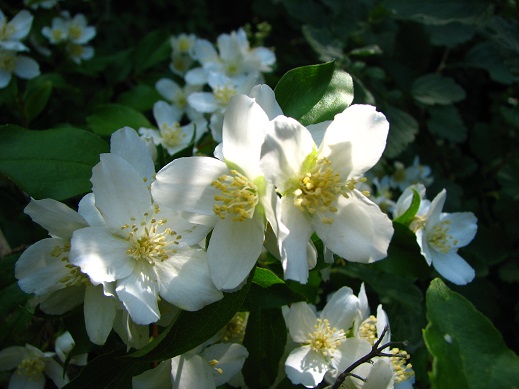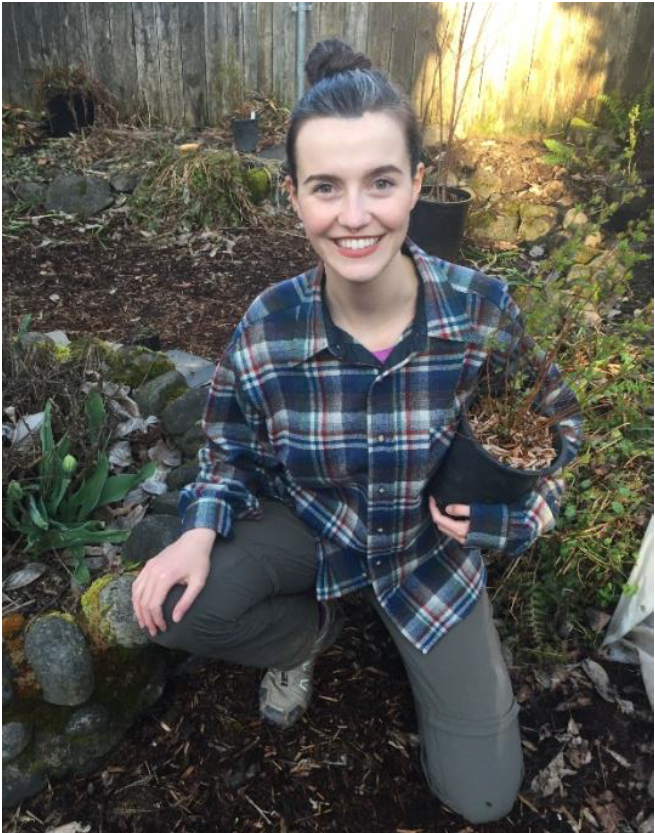By Janel Hull
There it was, a flash of radiant yellow, orange, and jet black in the tree tops. The bird settled on a branch of my backyard pear tree just in time for a high-pitched squeal to scare it to a neighboring tree. That squeal was mine. I couldn’t believe I was seeing a Western Tanager. In urban Southeast Portland. In my backyard. Eating my insects!
Two years before, I had embarked on a backyard experiment. I decided to turn my thirsty, patchy lawn into a habitat through the Backyard Habitat Certification Program. In my program site visit, I learned that native plants attract native insects which attract native birds. As a bird lover and a recently graduated ecology major, I wanted in on the action. I started the transformation by stacking thick layers of carboard and mulch to kill the lawn and create rich soil. In the winter, I tucked small seedlings of Mock Orange, Vine Maple, Western Columbine and other native plants into the moist soil. I added a bird bath, a stick pile for beneficial insects, and swore off yard chemicals. My experiment was ready.
For the first year, my native plants didn’t grow much. But by the second year, my backyard exploded into a teeming native forest. The Mock Orange doubled in size and the Western Columbine flowered into a delicate carpet of orange. Then the insects came. Native bees hung from Vine Maple flowers, tiny flies hovered in the canopy, and beetles I had never seen before circled the soil. As the insects munched away, I started devouring gardening books. I read Bringing Nature Home, a native plant gardening book by Dr. Douglas Tallamy. Douglas is an insect biologist and waxes poetic about the staggering diversity of insects. He also calls gardeners to an important mission.
Through Douglas’s book, I learned that native habitat is rapidly disappearing for native birds like the Western Tanager. Portland sits at the confluence of two key rivers, the Willamette and the Columbia. This triangle of land once thrived with oak prairie and wetlands brimming with camas flowers. Since Europeans arrived, we’ve mowed down native trees, shrubs, and groundcovers. We replaced those complex ecosystems with a network of urban and suburban yards, many of which contain sprawling lawn and nonnative plants.
Many insects can’t live on these foreign plants. Native insects evolved alongside native plants for millions of years and developed unique relationships where they depend on very specific plants. As those native plants disappeared, so too did the diversity of insects. This partly explains why a shocking 45% of insects are declining around the world.
Declining populations of insects are a big problem for birds. According to Douglas, a total of 96% of North America terrestrial bird species rely on insects and other arthropods to feed their young. These flying dinners contain more protein on average than beef, so they’re essential for growing baby birds. To have healthy birds, we need healthy insects. And to have healthy insects, we need a diversity of native plants in the urban and suburban areas of Portland we call home.
As a Portland gardener, I’m hopeful we can restore native habitat one yard at a time. By joining the Backyard Habitat Certification Program, I joined over 6,000 other households across 3 counties in adding habitat for our native birds and insects. Since 2016, the program has added over 113,000 native plants on over 1,700 acres where there once were none. That’s the equivalent of adding nine Mt. Tabor’s or three Powell Butte’s to our city. And I can personally attest that, thanks to the program, there is at least one new squeal-worthy Western Tanager sighting in Southeast Portland.


